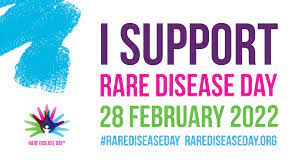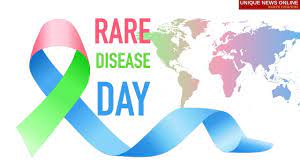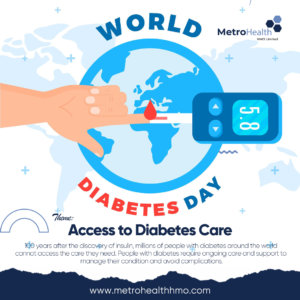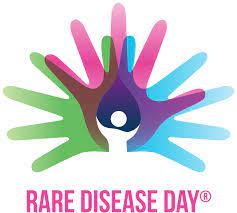
Each year, the 28th of February is dedicated to the “Rare Disease Day”— as it is considered the rarest day of the year since 2008. The aim of RDD is to raise awareness amongst the public and decision-makers on rare diseases and their impact.
RDD 2022 is themed “Share Your Colours” as the driving force for this theme is to help reduce diagnosis wait time; improve access to therapies and reduce stigmatization.
A scientific paper published by the European Journal of Genetics confirmed that about 300 million people are living with a rare disease globally, which accounts for 3.5- 5.9% of the population, of which 72% are genetically related.
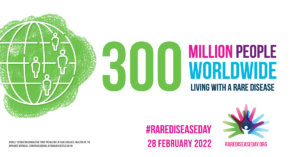
What is Rare Disease?
There is no universal or standard definition of rare disease.
WHO defines rare disease as often debilitating lifelong disease or disorder with a prevalence of 1 or less, per 1000 population. However, different countries have their own definitions to suit their specific requirements and in the context of their own population, health care system, and resources. In the US, rare diseases are defined as a disease or condition that affects fewer than 200,000 patients in the country (6.4 in 10,000 people)
The European Union 2020 defines a disease or condition as rare if it affects fewer than 1 in 2,000 people within the general population. Currently, there are over 6,000 known rare diseases and new conditions are being described through medical literature on a regular basis.
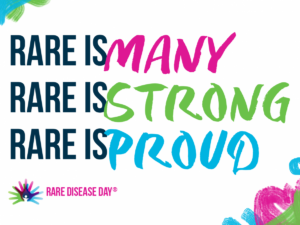
Causes of Rare Diseases
Rare diseases can have many causes. The majority (72%) are found to be genetic, caused by family history, congenital disabilities, or changes in chromosomes. Of those, 70% start during childhood.
Characteristics of Rare Diseases
Because of limited information, it is common for rare diseases to be misdiagnosed in its early stages. The characteristics of a rare illness include the following:
- They are often chronic, progressive, degenerative, and life-threatening.
- They have a high level of pain and suffering for patients and their family.
- They are disabling while compromising a patient’s quality of life due to the lack or loss of autonomy.
Facts about Rare Diseases
- 1 in 17 people will be affected by a rare disease at some point in their lives.
- Majority of rare diseases currently have no effective treatment.
- 8 out of 10 rare diseases have a genetic cause and 99% of genetic conditions are classed as rare. Often rare diseases are chronic and life-threatening. Rare diseases can be single gene, multifactorial, chromosomal, or non-genetic.
- On average, it takes over four years to receive an accurate diagnosis of a rare disease.
- Rare diseases include rare cancers such as childhood cancers and some other well-known conditions, such as cystic fibrosis and Huntington’s disease.
Common Rare Diseases
According to an article by Makati Medical Centre 2021, the most common types of rare diseases are.
1. Multiple Sclerosis
Multiple sclerosis (MS) is an autoimmune disease of the brain and spinal cord, affecting the central nervous system. It is characterized by numbness or weakness in one or more limbs that occur on either side of the body at a time. Patients usually suffer from tremors or electric shock sensations. In the long run, it can cause permanent nerve damage or deterioration. The cause of the disease is unknown, but a combination of genetics and environmental factors such as climate and low exposure to sunlight are said to be risk factors. Multiple Sclerosis has a prevalence rate of 90 in 100,000 people, and there is no cure, treatment is symptomatic.
2. Narcolepsy
Narcolepsy is a sleep disorder that impairs the patient’s ability to stay awake during the day. It is characterized by involuntary and excessive sleepiness, sleep paralysis, hallucinations, disrupted sleep, and partial (or total) loss of muscle control.
The exact cause of narcolepsy is unknown. It has a prevalence rate of 50 in 100,000 people; however, many exhibit symptoms of the condition for years before receiving a proper diagnosis. There is also no cure for narcolepsy, adopting lifestyle changes such as staying away from caffeine, alcohol, and nicotine, taking medicine to manage sleep problems, and trying cognitive behavioural therapy to develop a sleep schedule.
3. Primary Biliary Cholangitis
Primary biliary cholangitis is an autoimmune disease of the liver. In this chronic condition, the bile ducts are slowly destroyed. Bile aids with digestion and helps the body regulate cholesterol levels and filter toxins in the body. When it gets damaged, irreversible scarring of liver tissues, or cirrhosis, can occur.
More than 50% of people with this disease do not develop noticeable symptoms when diagnosed as they may take 5 to 20 years to manifest. There is also no exact cause for the disease. The prevalence rate of primary biliary cholangitis is 40 in 100,000 people. There is no cure for the disease, but several medications can be prescribed by a gastroenterologist to help manage symptoms of the patient.
4. Fabry Disease
Fabry disease is a hereditary genetic disorder. With this disease, the body cannot produce an enzyme called alpha-galactosidase A (⍺-GALA), which breaks down fatty acids in the body. This causes a build-up in the blood vessels, affecting the skin, brain, heart, kidneys, and nervous system. Due to the nature of the disease, a patient can exhibit varied symptoms, such as cloudy vision, painful skin rashes, hearing loss or ringing in the ears, and stomach pain, which makes it more challenging to diagnose. This is much more common in men than in women.
30 in 100,000 people are found to have Fabry disease. There are two types of treatment: enzyme replacement therapy (ERT) or taking a drug called migalastat. Both aim to ease the effects of the disease on the body and require multiple administrations. Treatment can also be done symptomatically.
5. Cystic Fibrosis
Cystic fibrosis (CF) is a hereditary disorder that affects the lungs and digestive system. It causes the body to produce sticky mucus which clogs the lungs and can present respiratory and breathing problems. The disease requires daily care, and patients have a shorter life span, usually up to their 30s or 40s. Symptoms may include wheezing, breathlessness, repeated lung infections, stuffy nose, greasy stools, severe constipation, and malnutrition. If poorly managed, this can escalate to other fatal complications such as liver disease or diabetes.
About 25 in 100,000 people are diagnosed with CF. There is no cure, and managing the symptoms is complicated, but doable. Most practice airway clearance techniques (ACT) to get rid of excess mucus in the lungs. Antibiotics are also taken to prevent lung infections, which can be taken orally, intravenously, or through inhalation.
Other Rare Diseases
A few types of rare diseases include the following.
- 47, XXY (Klinefelter Syndrome) Also known as: KS, XXY male.
- Aarskog Syndrome.
- Abetalipoproteinemia.
- Ablepharon-Macrostomia Syndrome.
- Acanthocheilonemiasis.
- Acanthosis Nigricans.
- Aceruloplasminemia.
- Achalasia.
- Stoneman Syndrome.
- Alice In Wonderland Syndrome (AIWS)
- Hutchinson-Gilford Progeria Syndrome (HGPS)
- Alkaptonuria.
- Chronic Focal Encephalitis (Rasmussen’s Encephalitis)
Prevention and Control of Rare Diseases
- Genetic counselling
- Prenatal screening
- Genetic engineering
- Capacity building of health care professional for early detection/ diagnosis
- Provision of a functional health care system to accommodate/manage people with rare diseases.
Conclusion
The battle against rare diseases continues, even if support for rare diseases is not adequate, medical practitioners and researchers are continually finding new methods in managing symptoms of those with rare diseases.
